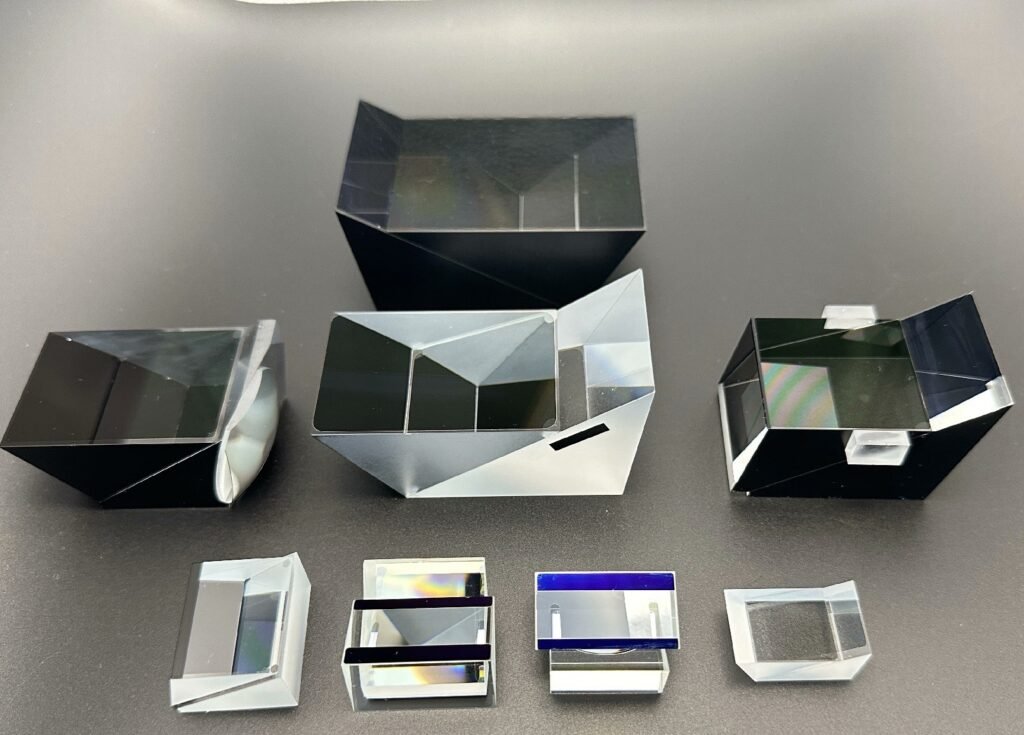Sapphire Prisms

Product Categories:
-
Exceptional Optical Transmission
-
Exhibits very high transmittance (up to 85–90%) in the visible range (400–700 nm) and into the near-infrared (up to 5 µm).
-
Stable refractive index (n ≈ 1.76 @ 590 nm) with low dispersion, ensuring precise beam deviation and dispersion control inside the prism.
-
-
Ultra-High Hardness and Wear Resistance
-
Boasts Mohs hardness of 9 (second only to diamond), making it resistant to scratches and impacts under harsh conditions.
-
Maintains geometric accuracy and optical performance under high mechanical stress or vibration environments.
-
-
Outstanding Thermal Stability
-
Very low thermal expansion coefficient (≈ 5.6 × 10⁻⁶/K), allowing stable operation across a wide temperature range (–200 °C to +200 °C).
-
High thermal conductivity (≈ 25 W/m·K) effectively dissipates heat, suitable for high-power laser systems.
-
-
Chemical Inertness and Corrosion Resistance
-
Chemically stable in most acids, alkalis, and organic solvents, resisting corrosion or leaching.
-
Compatible with various optical coating processes (anti-reflective coatings, high-reflectivity coatings), with coatings adhering firmly.
-
Primary Applications
-
Laser Optics: Used as polarizing prisms, beam splitters/combiners, and beam steering prisms paired with high-power laser systems—resisting deformation and cracking.
-
Precision Measurement & Spectroscopy: Employed in laboratory optical instruments for spectral dispersion, polarization measurement, and calibration, ensuring long-term stability and accuracy.
-
UV/IR Optical Systems: Due to its wide-band transmission, sapphire prisms enable specialized imaging or sensing in ultraviolet (UV) and far-infrared (FIR) wavelengths.
-
Aerospace & Defense Equipment: Installed in inertial navigation units, optical sensor windows in aircraft, and radar system modules—withstanding high temperatures and intense vibrations.
-
High-End Consumer Electronics: Found in smartphone camera lens windows and optical fingerprint sensors, where scratch resistance and screen compatibility are critical.
